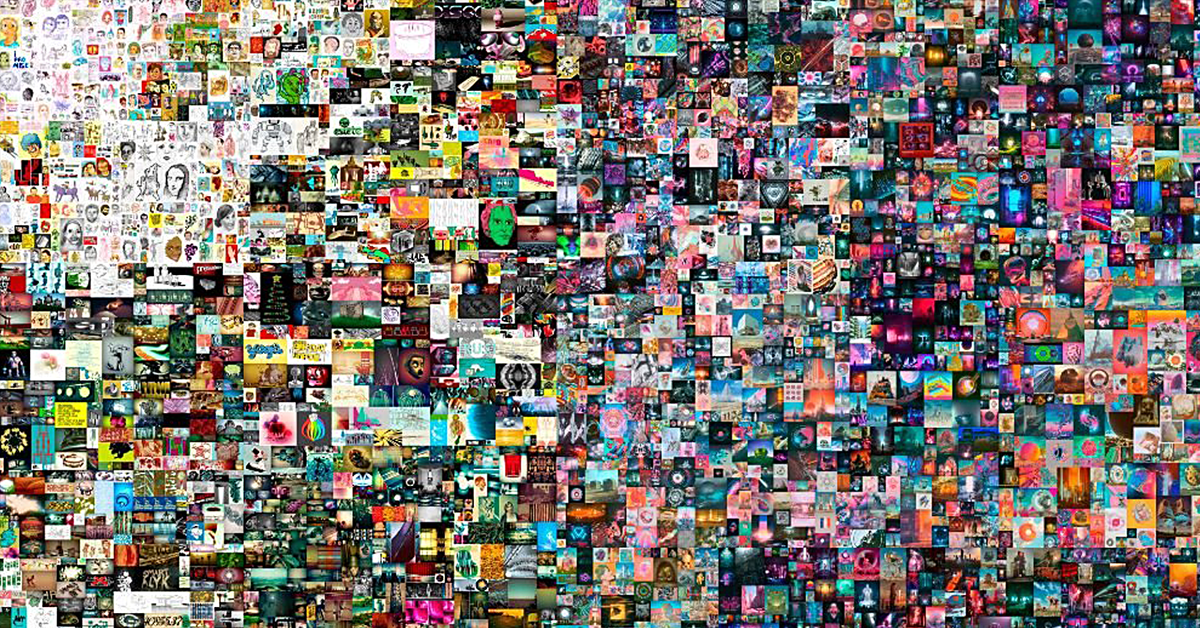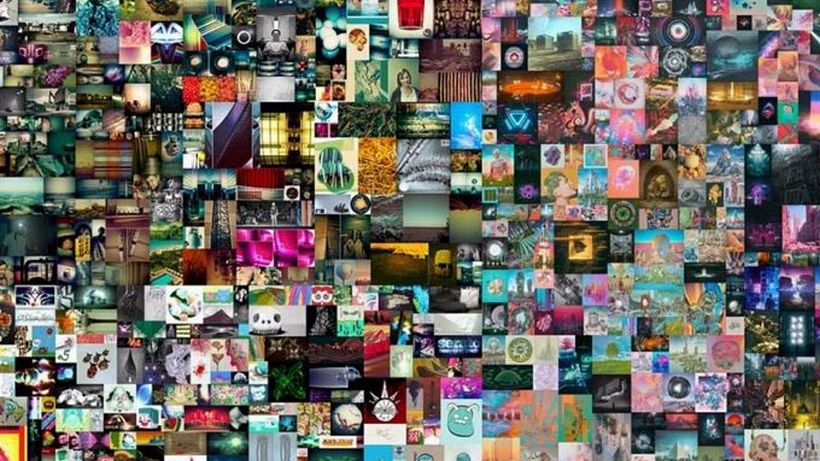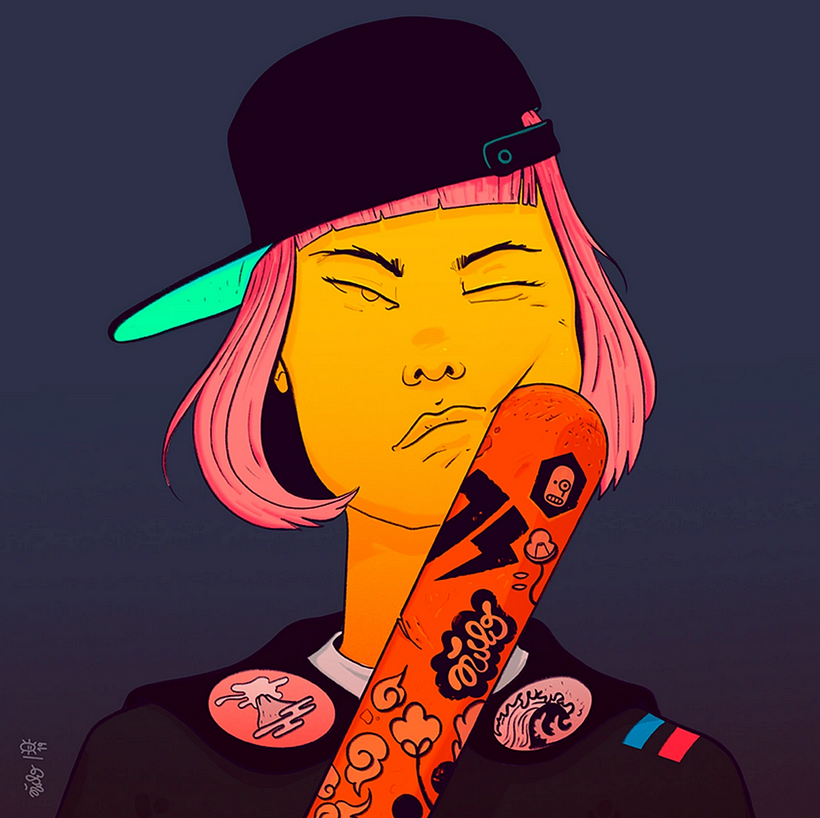How Can Artists Tokenize Their Work and Enter the New Crypto Art Market?

Digital artists share their experiences selling NFT artworks on the new digital art market
Over the last month, you have probably heard a lot about the possibility of tokenizing your art. Doing this means turning your work into an NFT (non-fungible token), which allows you to verify the originality of the piece and therefore access a huge emerging market.
The emergence of new digital art galleries–or marketplaces–that permit you to buy and sell original digital artworks has greatly aroused the interest of digital artists around the world. But what are NFTs, how are they created, and above all, how do you access these galleries?
Three artists from the Domestika community who have ventured into the world of crypto art answer all of our questions and share their own experiences.

What are NFTs, and why is everyone talking about them?
Illustrator Samaniego (@zigor) specializes in 3D art and lettering. By complete accident, he ended up becoming one of the first Spanish artists to venture into the digital art market and discover its potential. In October 2020, he received an email from a then-unknown digital art marketplace (called Nifty Gateway) asking him for three images and two videos from his Instagram for them to auction.
"They told me they followed me on Instagram, that they liked my work and thought they could make some money out of it. In return, they asked for 10% commission if the work sold," he recalls. "I asked them if they were going to print it or what because I didn't really understand what they wanted to do with my work. They explained that they were going to create an NFT for each artwork, but I didn't understand a thing," he confesses. "The truth is that I had nothing to lose, and so I sent them the work."
A few days later, the gallery told Zigor that one of the pieces, his animation Rojo Ramirez, had sold for $10,000 and that they were going to transfer the money into his account immediately. It was then that Zigor and many of his artist friends began to delve deeper into what it meant to create NFTs and the possibilities they can offer.
Zigor explains that what he discovered in October 2020 is what the world discovered on March 11, 2021, when Christie's, the legendary auction house, sold their first digital artwork for $69.30 million. That substantial sum resulted in Beeple going from being a virtually unknown artist to one of the highest-paid living artists in the world. This moment marked a before and after in the history of digital art listings. How was it possible to sell a work for so much money when anyone could download the image or simply take a screenshot? Well, it was possible thanks to NFTs.

NFTs or non-fungible tokens are a type of encrypted code that can be assigned to a digital artwork to identify it as an original piece which makes it valuable in the art market. Creating an NFT or tokenizing an artwork consists of registering the data that identifies the work as one of a kind and storing information such as the name of the author, the year the work was produced, its classification, the estimated price, as well as other necessary information that proves its authenticity. The NFT is what a collector acquires when buying a piece.
In other words: anyone can head to Zigor's Instagram account and take a screenshot or illegally download content, but only Zigor or whoever buys an artwork will have the NFT that certifies that it is the original file.

How can an artist tokenize a work of art?
Joseba Elorza, an illustrator and animator, also known as Miraruido (@miraruido), was listening to a podcast in late January when he learned about tokenizing and selling digital artworks. Immediately, he began to investigate. He discovered that Foundation was one of the most popular platforms for artists looking to enter the market. "Unlike galleries that contact you, marketplaces like Foundation and Superare ask the interested artist to apply, fill out a form, submit their work, and wait to be contacted," he explains.
"By then, NFTs were becoming bigger and bigger, and there was a waiting list," the artist recounts. By the time Foundation accepted his work, just days ago, Miraruido had already found another way in–his artist friends who had already been accepted and invited him in.
However, being admitted into the network was only a first step. Digital art galleries don’t use traditional currencies; instead, they use cryptocurrencies such as ethereum or polkadot. Miraruido had to create a virtual wallet to carry out transactions online. This wallet enabled him to pay the costs of tokenizing his work, in other words: creating his NFTs, which is a requirement before you can put a piece on sale.
The initial investment in NTF
The first payment an artist must make is to cover the costs involved in generating the NFT. "The prices of this process can range from $40 to $120, depending on the time and the number of people using the system," describes illustrator and animator Miraruido before clarifying that no one knows exactly how these costs are calculated. "Supposedly, they have to do with the energy expenditure involved in carrying out the process and how many people are doing the same thing you are doing at that moment," he details.

Miraruido ended up paying $100 per transaction. However, he sold his first work, an image called “Let there be light,” for $700 to a buyer with whom he had little contact. "I thought about sending them the printed work, but they didn't seem interested. It was all very mysterious," he reveals. He plans to invest the money he has earned in publishing more of his work on his space and investing in NFTs like the rest of the art world seems to be focused on at the moment.
The responsibility of selling is now in the artist's hands
By now, you are probably asking yourself, how does the possibility of entering the crypto art market change an artist’s day-to-day role? Creative director and art director Microbians (@microbians), who has recently joined on Foundation, finds that the first real "disruption" that this boom of marketplaces and auction houses in artists’ daily routine has been switching social networks. "We were all engrossed with Instagram but, all of a sudden, Instagram has gotten old. Not being able to insert links that take people to the marketplace where you are selling your work is a big problem and has caused lots of artists to move to Twitter," he observes.

For many, this has meant starting from scratch. "Not being a visual network, many artists had abandoned Twitter. It wasn't a promotional space. Now you have to build up your followers, use the right hashtags, and have a presence. After all, the onus is now on the artist to sell," he observes. This task, he admits, may not be as easy as it sounds. "Suddenly, people appear saying they are willing to spend 5000 euros on digital art and ask artists to show them their work to see if they like it. They retweet, inflate accounts, and make them grow. It's all so strange; it’s hard to know if it's real. The crazy thing, the thing that has us all hooked, is that it could be!".
Zigor has his next auction scheduled on Nifty Gateway for May 11, which coincides with Microbians. "My job has become 50% creating and 50% selling on Twitter. Now I have to show a preview of what I'm doing, but not too much, just the right amount. I have to really get to grips with self-promotion but, to tell the truth, it doesn't bother me," he clarifies. "Thanks to selling my work this way, I can now choose which clients I want to work with. It has changed my life,” he adds.
For Zigor, his experience of selling art online has opened him up to a whole new world of possibilities. At the beginning of it all, when he still did not know how it all worked, he rejected a collaboration with American musician Post Malone because, instead of paying him a fixed price for his work, he offered him a percentage in a cryptocurrency auction, something which, at the time, didn’t convince the visual artist. "The person who ended up taking that job likely has two mansions now," Zigor laments with a chuckle. Anyway, it’s all swings and roundabouts: Zigor is currently working on a series of animation pieces in collaboration with YouTuber Willyrex that will also be auctioned.
The three artists interviewed agree that NFTs are here to stay and take digital art into the big leagues. "This boom will calm down. It will stabilize, but I don't think it's going to be a passing fad," Microbians predicts. How this will impact the world of art, including aesthetics, how artists continue to create and self-promote, is sure to surprise us over the coming months.
English version by @eloiseedgington.
You may also like:
–10 Free Tutorials for Illustrators Who Want to Promote Their Work (And Don't Know How)
–Five 3D Designers and Artists Recommended by the Domestika Community
–What Is Voxel Art?







2 comments
mhrazone
Very interesting.
milka90135
This is especially valuable information. After all, this can assist the company to expand and reach new heights. As a result, I resolved to employ all available effective methods, and this source proved to be a godsend. I received qualified assistance in the development and promotion of my startup as a result of EvaCodes DeFi. So I'm wishing that my company will soon be in high demand on the global market.